Fundamentals to IT & AI
Python for AI
Statistics for AI
Machine Learning
Deep Learning
Transformers & GEN AI
Ai Agents & Applications
Physical AI ( Robotics)
Realtime ClassRoom Training
Project and Task Based
6 to 8 Hrs Every Day
Interviews, Jobs and Placement Support
Communication Skills & Personality Development
Interview Preparations
50000 +
Students Enrolled
4.7 ![]()
(500)
Ratings
6 months
Duration
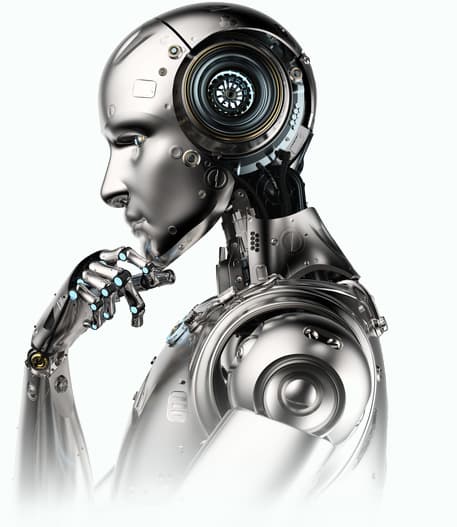
Why Master Artificial Intelligence (AI) Training With Digital Edify?
AI Engineer
AI Architect
Technology Consultant ReactJs
Systems Engineer
System Administrator
₹ 8 LPA
Avg package
44 %
Avg hike
3000 +
Tech transitions
Annual Average Salaries
Demand

87%
Managers said hiring Java Training was top priority
Our Alumni Work at Top Companies





1
Learn
Learn from Curated Curriculums developed by Industry Experts
Master Artificial Intelligence (AI) Course Curriculum
It stretches your mind, think better and create even better.
Topics:
What is AI?
AI is the ability of machines to perform tasks that require human intelligence, like learning, reasoning, and problem-solving.
How AI works
AI uses data, algorithms, and computing power to make predictions and automate tasks.
AI in everyday life
Virtual assistants (Open AI, Deepseek), recommendation systems (Netflix, YouTube), and chatbots.
Topics:
Application Overview
Understanding the significance and types of applications.
Web Application Fundamentals
Key components and basic concepts of web applications.
Web Technologies
Essential technologies and frameworks used in web application development.
Software Development Life Cycle (SDLC)
Phases and methodologies for effective software development.
Agile & Scrum
Principles, frameworks, and best practices for managing projects iteratively.
Topics:
What is data?
Information collected from different sources (text, images, videos, numbers).
Types of Data
Structured Data: Organized in tables (databases, spreadsheets).
Unstructured Data: Freeform content (videos, images, text, emails).
Semi-structured Data: A mix of both (JSON, XML).
Data Storage
Databases (SQL, NoSQL), cloud storage (AWS, Google Drive).
Data Analysis
Finding useful information in data to help make better decisions.
Data Engineering
Building systems and processes to collect, store, and process large datasets using tools like Hadoop and Spark.
Topics:
Processing Power for AI
AI needs strong computing resources to process large amounts of data.
Key Technologies
CPU (Central Processing Unit): General-purpose processor, used for basic AI tasks.
GPU (Graphics Processing Unit): Specialized for AI training and deep learning.
TPU (Tensor Processing Unit): Optimized for AI workloads (used by Google).
Edge Computing
Running AI on devices instead of the cloud (e.g., AI in mobile phones).
Cloud AI Platforms
Google Cloud AI, AWS AI, Microsoft Azure AI.
Topics:
Software Development
AI aids code generation, bug fixing, and testing.
Example: GitHub Copilot.
Autonomous Systems
AI in self-driving cars, robotics, and drones.
Example: Tesla autopilot.
Healthcare
AI diagnoses discovers drugs, and aids research.
Example: AI for MRI and CT scan analysis.
Finance
AI detects fraud, predicts stock trends, and automates trading.
Example: AI-powered credit scoring.
Education
AI personalizes learning and automates grading.
Example: AI tutors like Duolingo.
Retail & E-Commerce
AI recommends products and manages inventory, and pricing.
Example: Amazon’s recommendation system.
Topics:
Why Python?
Simplicity, Libraries, Community Support.
Setting up Python
Anaconda, Jupyter Notebook, VS Code.
Topics:
Data Types
int, float, string, list, tuple, dict.
Control Structures
if-else, loops.
Functions & Modules
Functions and reusable code organization.
File Handling
Reading and writing files in Python.
Topics:
Classes & Objects
Defining and using classes and objects.
Inheritance & Polymorphism
Reusing and extending class functionality.
Encapsulation & Abstraction
Data hiding and simplifying complex systems.
How OOP is used in AI
e.g., Model Classes in TensorFlow/PyTorch.
Topics:
NumPy
Arrays & Numerical Computation.
Pandas
Data Manipulation & Analysis.
Matplotlib & Seaborn
Data Visualization.
Topics:
Reading/Writing Data
CSV, Excel, JSON.
Handling Missing Data
Techniques to address incomplete datasets.
Data Cleaning & Transformation
Preparing data for analysis and modeling.
Topics:
Why Statistics?
Data Analysis, Decision-Making, Model Evaluation.
Types
Descriptive vs. Inferential Statistics.
Topics:
Measures of Central Tendency
Mean, Median, Mode.
Measures of Dispersion
Variance, Standard Deviation, Range, IQR.
Skewness & Kurtosis
Understanding data distribution shapes.
Topics:
Concepts
Probability Rules, Conditional Probability.
Probability Distributions
Discrete (Binomial, Poisson).
Continuous (Normal, Exponential).
Topics:
Hypothesis Testing
p-value, Confidence Intervals.
Common Tests
t-test, Chi-square test, ANOVA.
Topics:
Data Visualization
Histograms, Box Plots, Scatterplots.
Correlation & Covariance
Measuring relationships between variables.
Outlier Detection
Identifying and handling anomalies in data.
Topics:
Regression Basics
Linear & Logistic Regression.
Bias-Variance Tradeoff
Balancing model complexity and generalization.
Overfitting vs. Underfitting
Understanding model performance issues.
Topics:
What is ML?
Definition, Importance.
Types of ML
Supervised Learning (Regression, Classification).
Unsupervised Learning (Clustering).
Reinforcement Learning (Agent-Environment Interaction).
Topics:
Regression
Linear Regression, Multiple Regression.
Regularization
L1 - Lasso, L2 - Ridge.
Classification
Logistic Regression.
Decision Trees.
Random Forest.
K-Nearest Neighbors (KNN).
Naïve Bayes.
Performance Metrics
Accuracy, Precision, Recall, Confusion Matrix.
Topics:
Clustering
K-Means, Hierarchical, DBSCAN.
Topics:
Train-Test Split & Cross-Validation
Splitting data and validating models.
Overfitting vs. Underfitting
Addressing model performance issues.
Hyperparameter Tuning
Grid Search, Random Search.
Topics:
Handling Missing Data
Techniques for incomplete datasets.
Feature Scaling
Normalization, Standardization.
Feature Selection & Extraction
Choosing and transforming relevant features.
Topics:
What is Deep Learning?
Introduction to deep learning concepts.
Perceptron & Multi-Layer Perceptron (MLP)
Basic neural network structures.
Activation Functions
ReLU, Sigmoid, Tanh, Softmax.
Forward & Backpropagation
How neural networks learn.
Topics:
Architecture of ANNs
Structure of artificial neural networks.
Training Process
Gradient Descent, Optimizers like Adam, SGD.
Loss Functions
MSE, Cross-Entropy.
Topics:
CNN Architecture
Convolution, Pooling, Fully Connected Layers.
Padding, Strides, and Feature Maps
Techniques in CNN processing.
Transfer Learning & Pretrained Models
VGG, ResNet.
Topics:
What is NLP?
Introduction to natural language processing.
NLP Pipeline
Tokenization, Lemmatization, Stopword Removal.
Bag of Words (BoW)
Basic text representation.
TF-IDF
Term Frequency-Inverse Document Frequency.
Word Embeddings
Word2Vec, GloVe.
Topics:
Basics of RNNs & Their Limitations
Introduction to recurrent neural networks.
Long Short-Term Memory (LSTM)
Advanced RNN architecture.
Gated Recurrent Units (GRU)
Simplified LSTM variant.
Topics:
What is Generative AI?
Overview of generative AI concepts.
Key Applications
Text (Chatbots, Content Generation).
Image (DALL·E, MidJourney).
Audio (Music Generation, Voice Synthesis).
Code (Cursor, Copilot).
Evolution of GenAI
From Rule-Based Systems to Deep Learning.
Comparison of Generative Models (GANs, VAEs, LLMs).
Challenges in GenAI
Bias, Hallucinations, Ethical Considerations.
Topics:
What is Prompt Engineering?
Crafting inputs for AI models.
Importance of Effective Prompt Design
Improving model outputs.
Basic Prompting Techniques
Instruction-Based Prompts.
Few-Shot & Zero-Shot Learning.
Advanced Prompt Engineering
Chain-of-Thought (CoT) Prompting.
Self-Consistency & Iterative Refinement.
Structured vs. Unstructured Prompts.
Experimenting with LLMs
Using GPT-4, Claude, or LLaMA.
Topics:
Transformers & LLMs
Why Transformers? (Limitations of RNNs & LSTMs).
Key Components: Self-Attention Mechanism, Multi-Head Attention, Encoder-Decoder Architecture.
Evolution of Transformers
From BERT to GPT, T5, and Beyond.
Large Language Models (LLMs)
What are LLMs?
Pre Training vs. Fine-Tuning.
Popular LLM Architectures: GPT (OpenAI GPT-4,O3), DeepSeek, BERT (Contextual Embeddings), T5 (Text-to-Text Models).
Challenges in LLMs
Bias & Ethical Issues, Scalability & Cost, Model Hallucinations.
Generative Adversarial Networks (GANs)
What are GANs?
How GANs Work: Generator & Discriminator.
Applications of GANs (DeepFake, Image Generation, Super-Resolution).
Autoencoders & Variational Autoencoders (VAEs)
What are Autoencoders?
Difference Between Autoencoders & VAEs.
Applications (Data Denoising, Anomaly Detection).
Lightweight Models (LIMs)
What are Lightweight AI Models?
Difference Between LIMs & LLMs.
Use Cases of LIMs in Edge AI.
Topics:
LangChain
What is LangChain.
Building Modular LLM Workflows.
Practical Applications.
Hugging Face
Overview of Hugging Face Transformers & Datasets.
How to Fine-Tune & Deploy Models.
Vector Databases & Retrieval-Augmented Generation (RAG)
Introduction to Vector Databases (Pinecone, Weaviate, FAISS).
Understanding RAG and Its Role in GenAI.
Topics:
What are AI Agents?
Overview of AI agents.
Difference Between AI Agents and Traditional AI Systems
Comparing agent-based and traditional AI.
Key Characteristics
Autonomy.
Goal-Oriented Behavior.
Tool Usage & Execution.
Real-World Applications of AI Agents
Examples of AI agent use cases.
Topics:
CrewAI
Overview: How CrewAI enables multi-agent workflows.
Components: Roles, Tasks, Tools, Memory.
Use Case: Automating research and content generation.
N8N
What is N8N?
Connecting AI Agents with APIs and automation.
Use Case: AI-driven task execution with n8n.
Langflow
Introduction to Langflow.
Building AI Agent workflows with a drag-and-drop interface.
Use Case: Rapid prototyping and deployment of AI Agents.
Topics:
Creating AI Agents
Using CrewAI + Lang Flow.
Automating tasks
With CrewAI + N8N.
Multi-agent collaboration
For business workflows.
Topics:
Definition
Physical AI, also known as Embodied AI, integrates AI with physical systems to enable machines to perceive, interpret, and act in real-world environments.
Core Components
Sensors: Devices like LiDAR, cameras, and temperature sensors for environmental data collection.
Actuators: Robotic arms, motors, and other mechanisms to execute physical actions.
AI Algorithms: For real-time decision-making and pattern recognition.
Embedded Systems: Enabling low-latency processing and interaction.
Topics:
Healthcare
Robotic surgery, patient monitoring, and rehabilitation.
Manufacturing
Automation, quality control, and predictive maintenance.
Transportation
Autonomous vehicles and drones.
Service Industry
Customer service robots and automated delivery systems.
Topics:
NVIDIA Cosmos Platform
Overview: NVIDIA Cosmos is a platform designed to accelerate the development of physical AI systems such as autonomous vehicles and robots.
World Foundation Models (WFM): State-of-the-art models trained on millions of hours of driving and robotics video data, available under an open model license.
Benefits of Using NVIDIA Cosmos
Accessibility: Open and easy access to high-performance models and data pipelines.
Efficiency: Out-of-the-box optimizations minimize total cost of ownership and accelerate time-to-market.
Safety: Inbuilt guardrails to filter unsafe content and harmful prompts.
Topics:
Autonomous Vehicles
Enhanced perception and decision-making capabilities.
Robotics
Improved interaction with complex and unpredictable environments.
Augmented Reality
Optimized video sequences for AR applications.
TOOlS & PLATFORMS


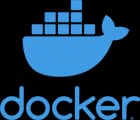


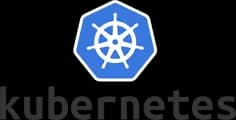









Our Trending Courses
Our Trending Programs
2
Build
Work on our Real-time Projects , Task Based
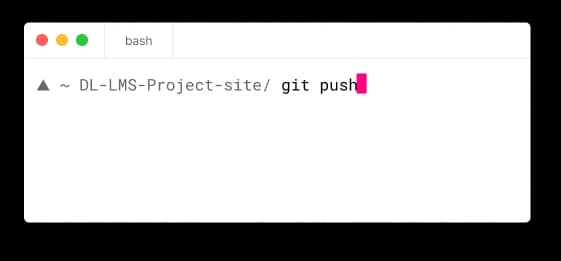
An LMS project develops a digital platform for online learning,featuring course creation, content management, user tracking,assessments, and reporting, aimed at enhancing educational interaction.
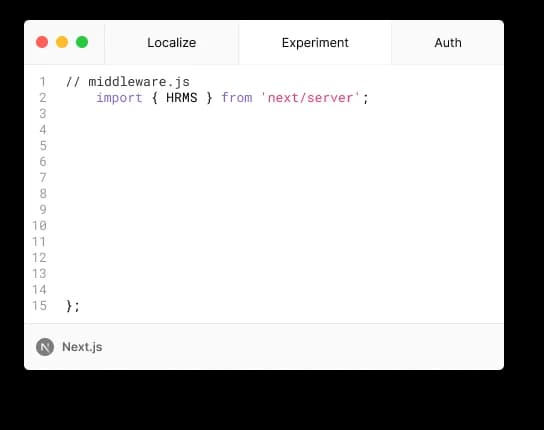
The HRMS project develops a digital system for managing HR functions like employee data, payroll, recruitment, and performance, aiming to streamline processes and enhance organizational efficiency.
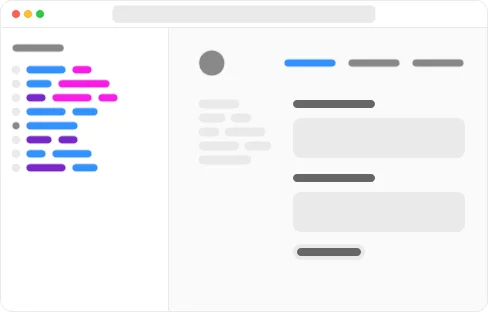
A CRM project develops a system to manage company interactions with customers, incorporating tools for contact, sales, productivity, and support to enhance service, drive sales, and boost retention.
3
Get Certification
Internships and Course certifications for Enhanced Skill Validation.
Internship Certificate
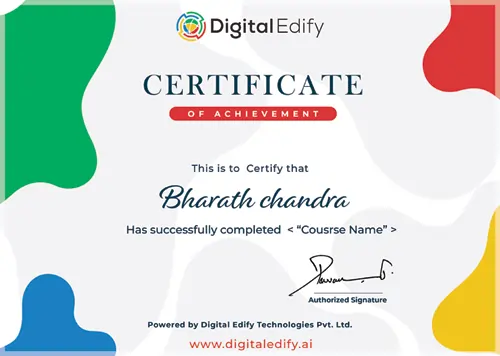
Course Completion Certificate

4
Get Job
Our focus on job-readiness Github Profile, Linkedin Profile, Resume Prep and Help Apply
GitHub Profile
Guidance on creating and maintaining a professional GitHub profile to showcase technical projects and coding prowess.
LinkedIn Profile
Assistance in crafting a compelling LinkedIn profile for networking and visibility among recruiters.
Resume Preparation
Expert advice on resume writing to effectively highlight skills, experience, and achievements.
Help in Applying
Support in identifying suitable job opportunities and navigating the application process.
IT Engineers who got Trained from Digital Edify




Upcoming Batch Schedule
3rd Nov 2025
Monday
8 AM (IST)
1hr-1:30hr / Per Session
29th Oct 2025
Wednesday
10 AM (IST)
1hr-1:30hr / Per Session
31st Oct 2025
Friday
12 PM (IST)
1hr-1:30hr / Per Session
Can’t find a batch you were looking for?
LEARNERS
BATCHES
YEARS
SUPPORT
100000+ uplifted through our hybrid classroom & online training, enriched by real-time projects and job support.
Come and chat with us about your goals over a cup of coffee.
2nd Floor, Hitech City Rd, Above Domino's, opp. Cyber Towers, Jai Hind Enclave, Hyderabad, Telangana.
3rd Floor, Site No 1&2 Saroj Square, Whitefield Main Road, Munnekollal Village Post, Marathahalli, Bengaluru, Karnataka.